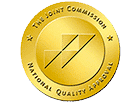It’s one of the most compelling paradoxes in the addiction treatment community. How can a drug that saves lives and sets people on the path to recovery also be a source of addiction itself? Methadone addiction is a serious issue that may require some people to undergo methadone detox before they can proceed with their recovery.
Methadone is a medication that has found itself residing in both camps. Long respected for more than 50 years in the treatment of opioid addiction, the very same properties that aid people in kicking a heroin habit can also lead to a methadone dependency — where the solution creates a new problem.
How can you or a loved one address a methadone addiction in light of another drug abuse disorder that methadone was meant to help treat? What do methadone detox and its withdrawal symptoms look like? Know that it is possible to reclaim your life with the right support in place.
What Is Methadone?
Note that methadone is not methamphetamine. The latter, known as “meth,” is a synthetically created and highly addictive stimulant. Methadone, on the other hand, is an opioid with a strong reputation for treating opioid abuse disorder, especially heroin addiction.
Researchers at Rockefeller University in the 1960s discovered that methadone, originally discovered as a painkiller for soldiers during World War II-era Germany, served a pair of purposes — reducing cravings and preventing withdrawal symptoms for heroin abuse, an addiction highly stigmatized at the time.
Today, according to a study by the National Institute on Drug Abuse, methadone patients showed 33% fewer opioid-positive drug tests and were 4.44 times more likely to stick with their drug abuse addiction treatment plan.
What Is Methadone Used For?
Methadone is primarily used in two contexts: managing chronic pain and treating opioid addiction. It’s often prescribed for people in severe pain from surgery, cancer treatment, neuropathy, or if you’ve suffered an injury, reducing the severity of physical pain that your brain’s pain receptors receive. Methadone also mitigates pain from painful, protracted withdrawals and cravings for opioids.
When a doctor prescribes methadone, it will usually come as a tablet, a liquid, or a powder.
How Do People Get Methadone?
Methadone is only legally available with a prescription through licensed methadone clinics or from methadone doctors near me. When you’re prescribed methadone, it may be through medication-assisted treatment, or MAT, plan, where medicine, in tandem with therapy and rehab, is used to combat a drug or substance abuse disorder.
However, some people who may have taken a turn into dependency may attempt to buy methadone online or from other questionable sources. Others may wonder, “How can I get emergency methadone?” when confronted with cravings.
This “street methadone” — sold without being prescribed by a doctor — may often be labeled like a real pharmacy bottle and look legitimate, but there’s no telling what might be inside. Street methadone can be mixed with other drugs, like fentanyl.
How Does Methadone Affect the Brain?
How does methadone work, exactly? Taking methadone changes how your brain and your nervous system react to pain.
Methadone is a synthetic, long-term opioid agonist medication. That means that if you suffer from opioid addiction, methadone works to block your brain’s opioid receptors, so if you take the prescribed dosage, you won’t feel the effects of heroin or other drugs because your receptors are filled with methadone, essentially blocking euphoric highs that originate in your brain’s reward centers, and reducing your cravings.
This concept is also called replacement therapy, where a legally prescribed substitute drug replaces a drug a person is dependent on or addicted to. However, this same mechanism can lead to both physical and psychological dependence.
One recent study of 35 people undergoing methadone maintenance indicated significant amounts of cognitive impairment, mainly in verbal fluency, executive function, and verbal memory.
Is Methadone Dangerous?
Methadone, according to Johns Hopkins University, is proven to reduce the chances of fatal opioid overdoses by more than 50%.
But you can also easily overdose on methadone, which is dangerous due to its long half-life and long-acting effects. Combining methadone and alcohol also increases the risk of overdose since both substances depress the central nervous system.
“Methadone is a very long-lasting opioid,” notes the Opioid Agonist Therapy Program. “It can stay in your body for more than 24 hours, making an overdose possible during that entire time, especially when taken in combination with other medications and/or alcohol.”
According to the U.S. Drug Enforcement Agency (DEA), methadone is chemically unlike morphine or heroin yet produces many of the same effects. Methadone overdose symptoms, warns the DEA, may include:
- Slow and shallow breathing
- Blue fingernails and lips
- Stomach spasms
- Clammy skin
- Convulsions
- Weak pulse
- Coma
- Possible death
Methadone overdoses are not uncommon in certain communities. Statistics show that fatal overdoses among U.S. military veterans rose by 53% from 2010 to 2019 — most on account of opioids.
What Is Methadone Detox?
The first way to ensure that treatment for drug addiction is effective is to cleanse your body of the substance. Methadone detox is a medically supervised method of stopping your methadone use, balanced with safely monitoring and mitigating any withdrawal symptoms you may experience.
Methadone Withdrawal Symptoms
Because methadone is addictive, most treatments will begin at a very low dosage, and methadone treatment should last at least a year on average, but like any drug, stopping usage should happen gradually to prevent withdrawal.
Symptoms of methadone withdrawal may start to appear between 24 to 36 hours after the last taking of the drug. At first, they may resemble flu-like symptoms (watery eyes and runny nose) and can include:
- Sleepiness
- Difficulty sleeping
- Anxiety
- Sweating
- Restlessness
Additional methadone withdrawal symptoms during the first week of withdrawal can include cravings, muscle aches and pains, cramps, depression, and nausea/vomiting. Thankfully, these symptoms are anticipated during detox, and at a trusted rehab facility, staff work to minimize these effects.
Methadone Detox Timeline
In general, Royal Life’s detox timeline is a 4- to 8-day program, but this can depend on certain factors, like your individual physiology, metabolism, and ability to flush the drug from the body. Including potential withdrawal symptoms, detoxing from methadone, according to studies, can last anywhere from two to three weeks up to six months.
Detox should not be a rushed process; it should be completed properly and thoroughly, and it should also avoid problems like precipitated withdrawal from arising.
The presence of other substances in one’s system may also influence your methadone detox timeline. How long does methadone stay in your system? According to the UNC Medical Center, methadone may be detected in your urine up to 72 hours after the last ingestion, which can compound withdrawal symptoms during those first three days.
Preparing for Methadone Detox
Beating a methadone addiction or entering detox doesn’t need to happen alone. With preparation comes full, unbroken support from clinicians and medical professionals who care about you and your sobriety.
Whether you consult with your healthcare provider, the methadone clinic you may receive your medication from, or a licensed treatment center, they can help you develop a tapering schedule and build a support system complete with a treatment plan and therapy.
Who Can Help with Methadone Detox?
You can rest assured that the spectrum of care at a treatment facility is unparalleled in helping you safely detox from methadone all the way through to aftercare. At Royal Life, this means providing medical oversight, emotional support, and access to research-based therapies — in a compassionate, humanistic, empowering, and accepting environment.
What Are the Benefits of a Methadone Detox Center?
- Medical supervision: From monitoring vital signs and managing opioid withdrawal symptoms to ensuring safety and comfort, a methadone detox addiction center like the facilities at Royal Life has all the needed experience, resources and structured programming that you or your loved one needs to overcome substance use disorder.
- Medication-assisted detox: Detox begins with a clinical assessment followed by an approved medical regimen, where medications such as buprenorphine or clonidine may be prescribed to ease withdrawal symptoms, for maximum comfort through withdrawal and safe, effective tapering off from substances.
- Compassionate, comprehensive care: Beyond detox, find resources for long-term recovery — from individual therapy through to aftercare planning at a methadone detox near me.
Helping a Loved One Through Methadone Detox
The detox process is integral to beating a methadone addiction, but supporting a loved one through methadone detox is a needed, critical part of their success. Here are some ways you can help:
- Educate yourself: Even if you’re unacquainted with methadone, learn about methadone, its effects, and the detox process to better help a friend, family member, significant other, or spouse through detox.
- Show encouragement: By expressing unwavering support in their journey, you give them the motivation to follow through with detox, rehab, and treatment to the end. Help them search for a detox center or free methadone clinic, especially if cost is an issue.
- Show patience and compassion: These are two of the most treasured emotions you can express. By showing them your most empathic self, their difficult journey down the road to recovery becomes that much easier.
- Avoid enabling behaviors: Addiction can impact the person and their loved ones, so set clear boundaries, like not giving them money for illegal methadone or enabling drug use while they’re in treatment.
Other Tips for Recovering from Methadone
Past the detox phase, recovery from methadone not only involves a fully-fledged treatment program involving individual therapy (like cognitive behavioral and dialectical behavioral therapies), but also other pieces of the support puzzle to build sustainability in their sober journey.
Recovery Support Groups
The power of one in your recovery from methadone speaks volumes, but the power of group therapy can truly enact positive change. Whether it’s through group therapy options at Royal Life, or, in aftercare, joining a recovery group such as Narcotics Anonymous (NA) or another 12-step program, be part of a sense of community that keeps everyone accountable for breaking free of methadone.
Holistic Lifestyle Changes
Healing the mind, body and soul is just as important to methadone detox as curing the physical and psychological dependencies of addiction. For instance, yoga therapy teaches mindfulness and helps to reduce cravings and manage difficult emotions while promoting tranquility, insight and spirituality.
Family Resources
Addiction can touch the lives of entire families of someone consumed by methadone abuse. By letting your loved one know how proud you are of them for seeking treatment, let your words and actions show that you trust them. Encourage them to sign up for a 12-step program, an online recovery community, and Royal Life’s alumni program.
If you or a loved one has struggled with opioid or heroin addiction and methadone, intended as a solution, has become problematic to the point of dependency, help is just one phone call away. Honor the power of your voice and begin your journey with us today.
REFERENCES:
- The Rockefeller University » Fifty years after landmark methadone discovery, stigmas and misunderstandings persist
- How effective are medications to treat opioid use disorder? | National Institute on Drug Abuse (NIDA)
- Methadone – StatPearls – NCBI Bookshelf
- Barriers to Methadone Access | Johns Hopkins | Bloomberg School of Public Health
- Methadone – StatPearls – NCBI Bookshelf
- Methadone – Alcohol and Drug Foundation
- What is Methadone? Effects, Risks & Addiction | SAMHSA
- Assessment of Cognitive Functions in Methadone Maintenance Patients – PMC




